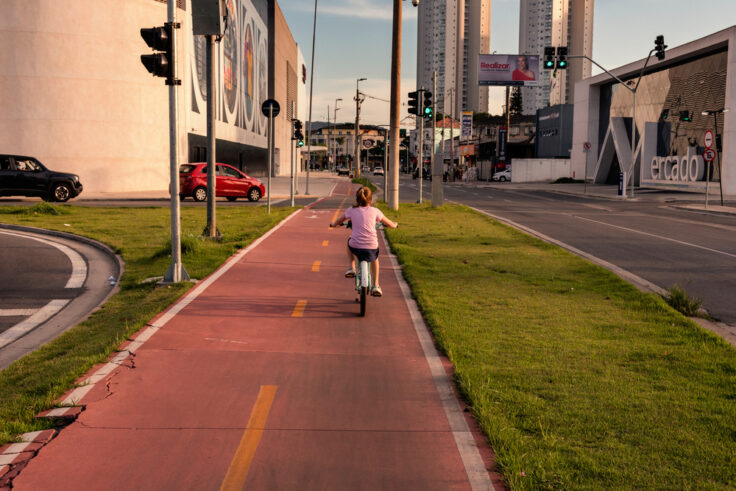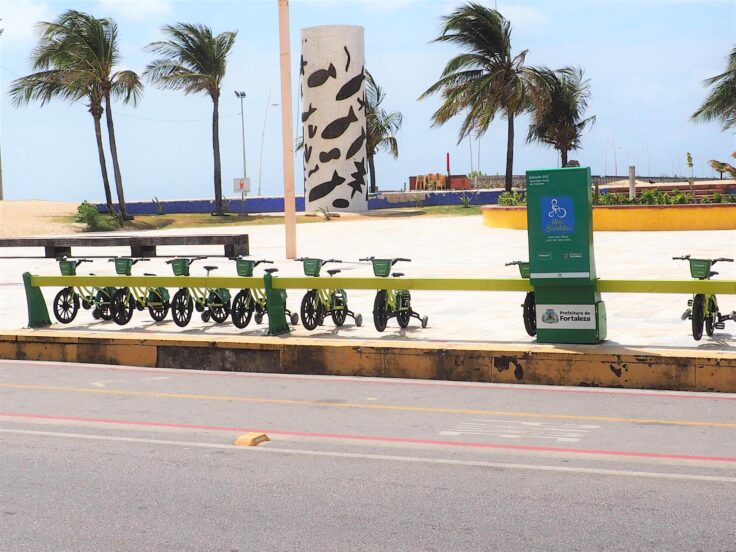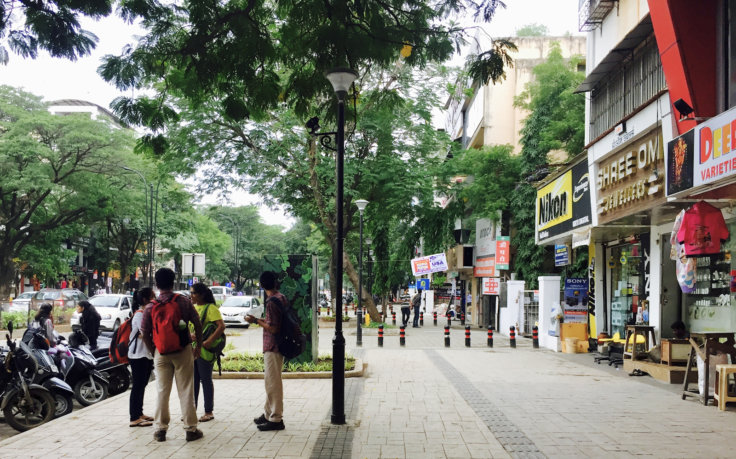October 17, 2024
Cycling Cities Start with Streets Designed for All Ages
In recent years, cycling has gained significant traction as an affordable, low-carbon alternative to driving in cities.
Learn more about ITDP’s Cycling Cities campaign and resources here.
The benefits of cycling over cars are evident: improved physical health, reduced transportation costs, and lower greenhouse gas emissions. However, despite these advantages, access to cycling remains limited, particularly for women, children, and caregivers whose trips cannot always be served by a traditional pedal bicycle. This issue is exacerbated by universal structural challenges such as the lack of protected bike lanes and personal security concerns, making cycling less accessible for these underserved groups.
Recognizing these challenges, ITDP’s Cycling Cities campaign recently convened city representatives, advocates, and partners to explore the critical intersection of cycling and inclusive access. This workshop discussion featured participants of ITDP’s two online courses: “Mastering the Cycling City,” which covers infrastructure design, policies, campaigns, and funding strategies essential for fostering urban cycling, and “Mobility and Access for Babies, Toddlers, and Caregivers,” which highlights the importance of integrating the needs of vulnerable user groups into planning and policy decisions.

Beginning With Bikeshare
Urban transport systems are rarely designed with children in mind, making it challenging for young people and their families or caregivers to navigate city streets safely. The city of Fortaleza, Brazil, stands out as an exception, having made significant investments in programs and street designs that prioritize children’s mobility. Tais Costa from Fortaleza, Brazil presented on the remarkable success of Mini Bicicletar, a bikeshare program for children. Mini Bicicletar, designed for children up to 10 years of age, is provided by the same operator that runs the city’s broader bikeshare system.
Before launching Mini Bicicletar, Fortaleza’s early childhood agency actively sought feedback from families to ensure that the program would meet the unique needs of children and caregivers. The city subsidizes 70% of bikeshare service costs, including Mini Bicicletar, making it free for all users. The initiative will celebrate its tenth year of uninterrupted operation at the end of 2024. In tandem with a massive expansion of the city’s cycling network from 6 to 406 kilometers over the past decade, bike trips in Fortaleza have reportedly surged by 700,000 in the same time period.

Register for the Master the Cycling City course on the ITDP Learning Hub.
Safer Journeys To and From School
Sathya Sankaran from Bengaluru, India, highlighted the “Walk and Cycle to School” pilot program, which ran for over three months and involved six schools in a densely populous neighborhood. The program encouraged students to cycle or walk to school one day per week. After the trial period, feedback from the students showed that they felt safer commuting by foot or bicycle, with a 32% increase in walking and 15% rise in cycling to school. The initiative highlighted a broader issue as well: the need to revive a culture of cycling in the city which has been waning because of street infrastructure projects and behavioral changes that increasingly favored private vehicle use.
Sankaran also shared insights into the India National Smart Cities mission in Bengaluru. The initiatives have led to the creation of pop-up cycle lanes and community-led cycle rental schemes in Bengaluru and in other cities nationwide. However, Bengaluru, as a notoriously congested city, has seen 17 kilometers of cycle tracks also taken down to accommodate metro system construction. The mission is working to convert temporary interventions into permanent urban fixtures, collaborating with the city to develop and additional 84 kilometers of cycle lanes.
The final presenter, Anna Becchi, discussed the “Street for Kids” campaign, an initiative coordinated by Clean Cities, a coalition focused on reducing emissions and pollution from urban transport in European cities. “Streets for Kids” advocates for transforming streets in front of schools by restricting motorized traffic during drop off and pick up times or throughout the day. The campaign organizes action days, during which parents and partner organizations mobilize and engage in flash mobs, street parties, sports events, and other activities aimed at reclaiming streets. “Streets for Kids” also publishes relevant research and data analyses on school streets, aiming to show the benefits of cities designed for people, not just for motorized vehicles. The campaign has worked to show parents the benefits of school streets and has successfully advocated for over 100 school streets in Europe.

Following these presentations, a lively discussion delved into various nuanced aspects of expanding access to cycling infrastructure. Topics included strategies for generating political goodwill, improving communication with parents about the benefits of cycling, and best practices for data collection. Tais Costa emphasized the “never-ending dialogue” with technicians, politicians, and activists, noting that placing children’s needs at the heart of these conversations is crucial to securing support for cycling initiatives. Anna Becchi echoed the importance of engaging parents in events like sport days to highlight the importance of not parking cars in front of schools. ITDP staff Dana Yanocha and Danielle Hoppe further stressed the importance of incorporating parents’ perspectives and involving teachers and school-aged children in the design process of safety-related interventions.
With road traffic injuries still a leading cause of death for children and young adults worldwide, protecting our communities starts with a holistic approach to infrastructure design and policy that prioritizes the needs and wellbeing of all people on the road.
